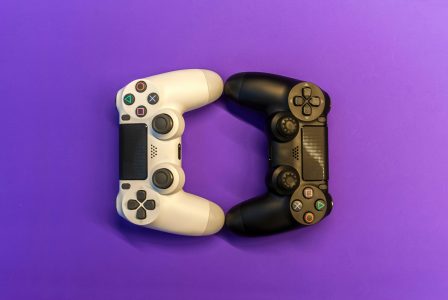Widgetized Section
Go to Admin » Appearance » Widgets » and move Gabfire Widget: Social into that MastheadOverlay zone
The Governance Conundrum in Collegiate E-sports
The views expressed are those of the author and do not necessarily reflect the views of ASPA as an organization.
By Tynslei Spence
January 31, 2025

Over the last decade, e-sports has risen to become a cultural phenomenon in the gaming community. E-sports (shortened from “electronic sports”) is competitive video game play that typically occurs in a multiplayer environment. One team can be comprised of players from across the world. Popular videogames that have become e-sports staples are Call of Duty, League of Legends, Super Smash Brothers and NBA 2K. Its popularity has found itself at the center of a riveting discussion in collegiate sports, specifically as it relates to who is considered a college athlete and what is a sport as the two governing organizations for U.S. intercollegiate athletics—the National Collegiate Athletic Association (NCAA) and the National Association of Intercollegiate Athletics (NAIA)—differ on how they intend to provide collective oversight to e-sports.
The NCAA, the larger of the two, currently does not recognize e-sports to fall under the purview of collegiate athletics. NCAA bylaw 20.2.4.6 § A (2023) states that the sport must be one where the NCAA conducts championships, and an NCAA-sponsored e-sports championship does not exist. However, this does not prevent their member institutions from creating school-sanctioned e-sports teams or participating in tournaments within their conferences. However, participants are not considered to be student athletes.
Alternatively, NAIA policy does recognize e-sports as a collegiate athletic activity. In Article V § B of its bylaws, NAIA (2023) defines a varsity sport to be one that is administered by the institution’s athletic department, where student participation is certified by eligibility staff and eligible for institutional varsity awards. Each NAIA member institution is permitted to define what their institution considers a sport and who is considered a student-athlete.
By redefining who can be considered a student athlete and what can be considered a collegiate sport, public administrators are witnessing the Hamiltonian vs. Jeffersonian debate occur in college sports, adding more complexity to collegiate athletic governance. I consider NAIA’s policy to lean Wilsonian as well as Jeffersonian. Just as Woodrow Wilson called for politics to be removed from public administration, NAIA removes the politics of defining a sport from its governance by authorizing their member institutions to make that determination.
There are benefits to both governance models. A financial benefit is obvious: Colleges are able to participate in competitions that bring a comparable amount of money to their institution as athletic conferences, if not more. For reference, the 2023 League of Legends World Championship prize pool was $2.23 million. This is an opportunity for historically underfunded institutions, as well as schools who received less endowments and grants, to generate money. E-sports participants at NCAA member institutions are not bound by the amateurism restrictions that exist for traditional college athletes so they would be eligible to play for both a school-authorized team and compete professionally. Also, while not an athletic scholarship, some NCAA member institutions offer e-sports participants academic scholarships in exchange for their participation. A 2011 NCAA survey revealed that in all NCAA Divisions (Divisions I-III), student-athletes contribute about 30-40 hours each week to their athletic program and competitive gaming requires a similarly structured schedule. While I presume leadership at NCAA member institutions would take this time commitment into consideration for e-sports participants, this flexibility is not set in stone as it is for student-athletes and remains at the institution’s discretion.
Alternatively, NAIA member institutions can offer e-sports participants athletic scholarships and other perks that have been designated for traditional student-athletes previously because they too are considered student athletes. This could include specialized housing, structured class and training schedules, and other areas of financial aid. It also creates an opportunity for these institutions to recruit top e-sports talent and have exclusive access to their competition presence as an amateur. By designating some of the top players in the world as amateurs, there is a possibility that college e-sports teams could become as evenly matched as professional e-sports teams.
There are many examples to reference when evaluating how lucrative the e-sports industry has become. Social platforms like Twitch report record viewership for competitive gaming events. Ticketmaster sells thousands of tickets annually to fans who wish to witness the competitions live. The NBA 2K League (the official e-sports division of the NBA) sells licensed merchandise for each of its respective teams. However, the governance of professional and college sports vary greatly.
As public administrators, we should continue to monitor collegiate e-sports governance to examine its effects on higher education administration and policy. As mentioned in his 2022 PA Times article, Martin Sellers noted that nearly one-third of U.S. academic institutions are public, so the determination of who is considered a student athlete and what is considered a collegiate sport has the ability to influence the discourse around paying student athletes name, image and likeness profits, conference membership and other issues directly impacted by collegiate athletic governance.
With its ability to potentially shift athletic governance over the next few years, e-sports may be the new sheriff in town.
Author: Tynslei Spence is a member of ASPA’s Keystone Chapter. She holds a BA in U.S. History from Rutgers University-Newark, MA in Criminology and Justice from St. John’s University, and DPA from West Chester University. She is reachable at [email protected].


 (4 votes, average: 4.25 out of 5)
(4 votes, average: 4.25 out of 5)
Carolina
February 1, 2025 at 11:08 am
Great article!